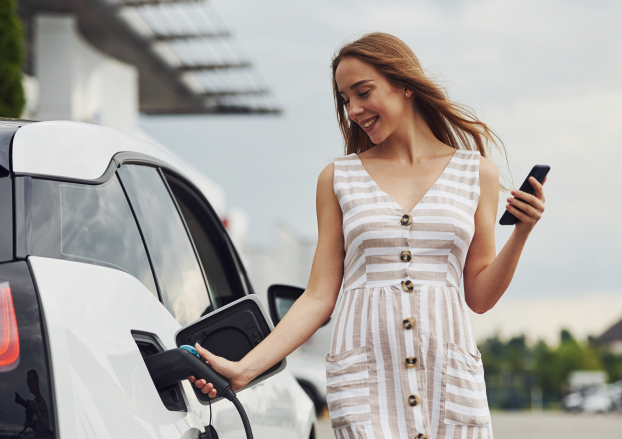Electric Vehicle Loans
Planning to give up on petrol? Australians have been following the trend by switching to an electric vehicle, or EV, in the past years – with more than half a million looking to buy a new car leaning towards a battery-powered vehicle. As of June 2023, a total of 46,624 EVs have been sold here – about 3 times the uptake compared to 2022. The percentage of electric vehicles now represents 8.4% of all new cars sold in the Oz. Even with a still limited number of brands, consumers are steadily adopting EVs for their mode of transport. Why? One reason is that fuel prices are rising as high as $2.30 a litre. People are motivated to invest in electric vehicles and no longer rely on petrol for day-to-day transport. But the petrol hikes aren’t the only reason. State governments are incentivising ‘going green’ with subsidies on electric vehicle loans. EVs are definitely pricier than petrol vehicles, but are they worth the extra cost? Let us discuss the benefits of electric vehicles, what are the government incentives for green car users, and the pros and cons of opting for an electric vehicle in Australia. Why go green with electric vehicles? Electric vehicle use is gaining traction, allowing Aussies to embrace sustainable transportation while potentially saving money over time. Even though Aussies are slower in adopting EVs than, say, Europeans, every state and territory has reported more than double of EV sales compared to all of 2022. ACT had the largest uptake in market share, followed by Tasmania and NSW. It is fueled by international and Australian environmental legislations moving towards carbon neutral and net-zero emission targets. Since transport emissions are among the most significant contributors to CO2 emissions, consumers make a difference when choosing less non-renewable power, less pollution, and more sustainable energy vehicles. As well as supporting the environmental cause, sustainable choices help save money! Even if electric vehicles are more expensive up front, stats suggest that battery-electric cars are cheaper overall to own and run. One reason is recharging costs much less than refueling. Owning an EV puts some savings back, depending on your mileage. The average Aussie driver travels up to 13,000 km annually, saving $2,600 a year. Given a few years, this equates to thousands saved over the vehicle’s life. And there are no worries when charging these cars – as of June 2023, public charging locations are 558, and individual high-power public EV chargers is around 967, with multiple charging bays in place. Electric vehicle loans are also less costly to maintain and sometimes have no servicing costs. Again, a few thousand added up over the vehicle’s life saves a lot. Are there any state government subsidies for electric vehicles? Yes, the best time to switch to a cheaper EV is now, as all states and territories have implemented incentives to encourage the adoption of EVs. From rebates to lower purchase price, zero-interest loans, and discounts on registration fees – these motivate consumers to go electric. The Australian federal government has also slashed import duty on units that are priced below the luxury car threshold. And aside from import duty, EV purchases are exempt from fringe benefits tax, which benefits fleets and consumers that can buy an EV through salary sacrifice arrangements. Let’s review what rebates and incentives are offered per state/territory: NSW Currently, New South Wales has the biggest incentives for EV buyers, with as much as $5,538 financial incentives: Rebate – $3,000 electric vehicle rebates for the first 25,000 EVs sold below $68,750 – Used EVs and Plug-in hybrid vehicles (PHEVs) are not eligible – Vehicles under a novated lease are not eligible Stamp Duty – Stamp duty exemption applicable to EVs priced under $78,000 for both new and used vehicles – PHEVs are not eligible for free stamp duty ACT Australian Capital Territory does not put a cap on EV price that’s eligible for stamp duty waiver: Stamp Duty – Stamp duty exemption for eligible EVs – the priciest unit, Porsche Taycan Turbo S, waives as much as $15,995 stamp duty – Eligibility includes both personal users and businesses – New and demonstrator EVs are eligible, while used EVs and PHEVs are not – Stamp duty discount is based on savings from ZEV duty waiver relative to duty payable on the vehicle with average environmental performance Registration – ACT offers free registration for years only to the eligible EVs specified above. – Registration discount based on 2 years free registration plus 3 years of lowest weight-based fee relative to the current fee EV Loans – Under the Sustainable Household Scheme, eligible homeowners can borrow up to $15,000 interest-free loan for EVs and vehicle charging infrastructure. VIC Victoria government closed the EV subsidy application in June 2023: Rebate – $3,000 electric vehicle rebates for the first 20,000 EVs sold below $68,740 – Rebate is limited to one per individual and two per business Stamp Duty – Luxury duty waived for EVs sold over $100,000 Registration – Annual $100 registration discount SA South Australia offers subsidy for EVs purchased from 2021: Stamp Duty – There is no stamp duty exemption in SA like in other states Rebate – A flat $3,000 electric vehicle rebates for the first 7,000 EVs sold up to $68,750. Cars that exceed the price are not eligible. – Rebate is limited to one per person and two per business – Used EVs and PHEVs are not eligible Registration – Free registration for three years for all eligible EVs QLD Queensland has the highest EV subsidy out of all the states in Australia: Rebate – The first 15,000 EVs purchased in QLD on or after March 16 2022 are eligible – A $6,000 electric vehicle rebates for units priced up to $68,000 – for households earning $180,000/year or less – Households earning over $180,000 can enjoy a rebate of $3,000 for EVs priced up to $68,000 – EVs should be purchased through a licensed car dealer – Rebate is limited to one per person and five per business Stamp Duty – EVs priced up to $100,000 pay 2% stamp duty – EVs priced over $100,000 pay 4% stamp duty WA Western Australia has no stamp duty concessions, and only provides rebate for new EVs: Rebate – The Zero Emission Vehicle rebate scheme provides $3,500 rebates for the first 10,000 EVs sold in WA until May 2025. – EVs priced up to $70,000 are eligible TAS Tasmania government only offers stamp duty exemptions, and no cash subsidy for EVs: Stamp Duty – Starting July 2021, stamp duty exemption applies to all eligible EVs bought in TAS – No cap on vehicle amount – based on the most expensive vehicle, the stamp duty exemption could be worth $13,866. – Used EVs and PHEVs are not eligible Northern Territory The Northern Territory government has stamp duty concessions, free vehicle registration, and charger grants available from July 2022 onwards: Stamp Duty – Stamp duty exemption of up to $1,500 for eligible EVs that are priced up to $50,000 – Eligible EV users are personal and business users Registration – Registration discount limited to five years for all eligible EVs priced $50,000 EV Charger – EV charger grants offers $1,000 to 100 residential EV charger installations and $2,500 to business EV chargers. Should I opt for an Electric Vehicle Loan? Australia is moving towards an electric future. In ACT, for instance, the government will be banning the sale of new petrol cars by 2035. Lenders are also following suit – Bank of Australia proposed the end of petrol vehicle financing by 2025. So, if you are considering making the switch, the best time is now to search for electric vehicle loans or green car loans. Lenders may have a bit of difference in which cars are eligible. Still, it’s the general consensus that these loans are meant for vehicles that produce less carbon dioxide (CO2) than traditional petrol-fueled units. Electric vehicle loans are still fairly new products in the Australian market, so not every lender provides this type of financing. You’ll have more options when working with our car loan professionals who can scour the market for the best rates. How much can I borrow? Green car loans vary in rates, with the best ones having interest rates at around 6%-7% p.a. at a loan of $20,000 for 5 years. That would equate to approximately $400 per month in repayments. Electric vehicles encourage a more sustainable lifestyle, and you need a suitable loan towards that goal. Lenders are now incentivizing borrowers who are shifting to green choices, which means they may waive certain fees on the car loan and give more competitive rates than standard car loan rates. But keep in mind, offers vary quite a lot, so you’d want a car loan broker to help compare the latest options. To find out how much you could save by going for a green car loan, check out Intellichoice Car Loan Calculator here. Talk to us about electric vehicle loans As the electric vehicle market matures, the benefits of switching to EVs are expected to outweigh the drawbacks, making them a practical and eco-friendly choice for Australians. Let our car loan professionals guide you through the process and gather essential information to provide the best estimate for your electric vehicle. Once you’ve received the estimate, you can proceed with the loan application to initiate the approval process. Our team will verify all the necessary documents, and once everything is in order, you can conveniently finalize the purchase and settle your loan online. Talk to us today to get started. Darin Hindmarsh See Full Bio

